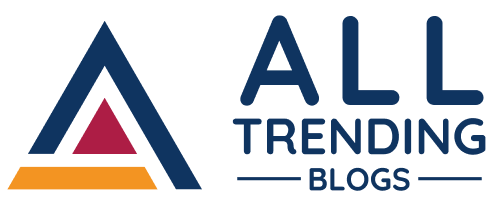Landing pages are the gateways to your online business or campaign success. A well-designed landing page can make the difference between a casual visitor and a committed customer. To achieve optimal results, it’s crucial to follow best practices that guide users toward conversion. In this guide, we’ll explore the art of designing landing pages that convert, along with real-world examples to illustrate these principles.
Start with a Clear Objective
Before you even start designing, define the main goal of your landing page. Is it to sell a product, capture leads, promote an event, or something else? A clear objective guides the design and content decisions.
Minimalistic Design
Keep the design clean and clutter-free. Avoid distractions that divert users’ attention from the primary call-to-action (CTA). Use ample whitespace to create a balanced and visually appealing layout.
Example: Apple’s product landing pages often employ a minimalist design, allowing their products to take center stage.
Compelling Headline and Subheadline
Craft a headline that captures attention and communicates the value proposition succinctly. The subheadline can provide additional context and persuasive information.
Example: Slack’s landing page uses a headline that directly addresses the user’s pain point and offers a solution.
High-Quality Visuals
Use high-resolution images and videos that showcase your product or service. Visuals can evoke emotions and convey the benefits more effectively than text alone.
Example: Airbnb’s landing page features high-quality images of unique accommodations, enticing users to explore further.
Clear and Actionable CTA
Your call-to-action (CTA) button should be prominent, contrasting with the rest of the design. Use action-oriented text that clearly states what users can expect after clicking.
Example: Dropbox’s landing page places a simple, contrasting CTA button in a strategic location, making it easy for users to start using the service.
Social Proof and Trust Signals
Incorporate customer testimonials, reviews, ratings, or recognizable logos to establish credibility and build trust.
Example: Amazon’s landing page for Kindle Oasis features customer reviews and ratings, influencing potential buyers.
Benefits and Features
Highlight the key benefits and features of your product or service. Clearly explain how it solves users’ problems or improves their lives.
Example: HubSpot’s landing page uses icons and concise text to outline the benefits of their software.
Mobile Responsiveness
Ensure your landing page is optimized for mobile devices. A responsive design ensures a seamless experience across all screen sizes.
Example: Google’s mobile app landing page maintains a user-friendly layout and readability on small screens.
Limited Navigation
Minimize navigation links to keep users focused on the primary CTA. Remove distractions that might lead them away from conversion.
Example: Shopify’s landing page for a free trial minimizes navigation options to encourage sign-ups.
A/B Testing
Continuously test different elements of your landing page, such as headlines, CTAs, images, and colors. A/B testing helps identify the most effective combinations.
Example: Netflix frequently tests various CTAs to determine which ones resonate best with their audience.
Scannable and Engaging Content
Users typically scan content before deciding whether to engage further. Use clear headings, bullet points, and short paragraphs to make the content easily scannable. Engaging content keeps visitors interested and encourages them to explore more.
Example: Asana’s landing page uses concise headings and bullet points to highlight key features and benefits.
Consistent Branding
Maintain consistent branding elements, such as colors, typography, and logo, to establish a cohesive and recognizable identity.
Example: Coca-Cola’s landing page showcases its brand colors and logo, creating a consistent brand experience.
Urgency and Scarcity
Incorporate urgency and scarcity tactics to encourage immediate action. Limited-time offers or low-stock notifications can motivate users to convert quickly.
Example: Booking.com’s landing page includes urgency by highlighting the limited availability of hotel rooms.
Interactive Elements
Interactive elements like quizzes, calculators, or interactive product demos can engage users and provide personalized experiences.
Example: The landing page for Shopify’s 14-day free trial includes an interactive tool to help users estimate potential revenue.
Clear Value Proposition
Clearly communicate what sets your product or service apart from the competition. Explain how it addresses users’ pain points and offers a unique solution.
Example: Grammarly’s landing page highlights its value proposition by focusing on error-free writing.
Lead Capture Forms
If your goal is to capture leads, design your form for simplicity. Ask for only essential information and avoid overwhelming users with too many fields.
Example: Salesforce’s landing page keeps the lead capture form concise while offering valuable content in exchange for contact details.
Benefit-Oriented Headlines
Create headlines that highlight the benefits users will gain by taking action. Focus on the transformation or improvement they can expect.
Example: Coursera’s landing page emphasizes the benefit of learning from top universities and industry experts.
Localization and Personalization
Tailor your landing page content based on the user’s location or previous interactions. Personalization enhances the user experience and boosts conversions.
Example: Amazon’s landing page customizes content based on the user’s browsing history and preferences.
Exit-Intent Popups
Employ exit-intent popups that appear when users attempt to leave the page. These popups can present special offers or incentives to entice users to stay.
Example: HelloFresh’s landing page uses an exit-intent popup to offer a discount to users who are about to leave.
Analytics and Continuous Improvement
Use analytics tools to track user behavior, conversion rates, and other metrics. Regularly analyze data to identify areas for improvement and optimize your landing page.
Example: Adobe Analytics provides insights into user behavior and conversion rates, helping businesses refine their landing pages.
Conclusion
Designing landing pages that convert requires a strategic blend of design principles, psychology, and user-centered thinking. By implementing these best practices and drawing inspiration from real-world examples, you can create landing pages that engage, resonate, and drive users toward conversion. Remember, the journey doesn’t end once the landing page is live. Regularly assess performance, conduct A/B tests, and iterate based on user feedback to ensure your landing pages consistently achieve their conversion goals. With the right approach, your landing pages can become powerful tools in your digital marketing arsenal, driving business growth and success.

